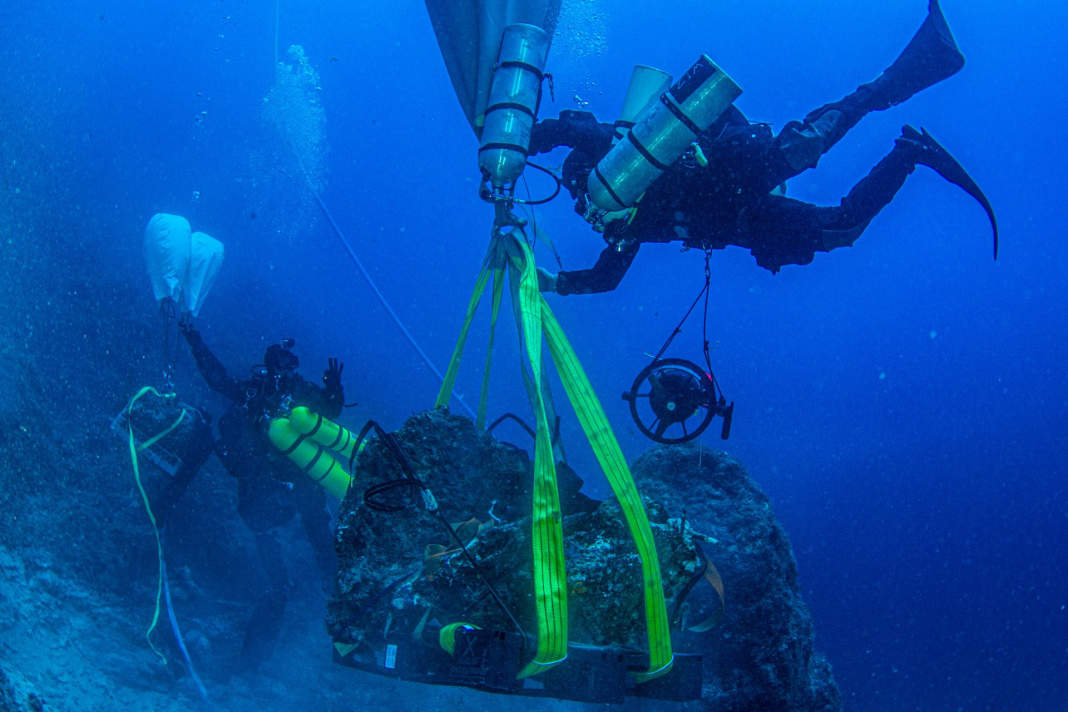Wreck found off Antikythera: Depth reveals shipbuilding secrets from antiquity






The fragile fragment of the boat's hull was brought to the surface undamaged thanks to a specially developed support structure. It consists of three planks, which are still connected by a frame and now offer exciting insights into the construction and origin of the wreck.
Ancient shipbuilding method deciphered
Initial analyses revealed that the planks were made of elm and oak and date from around 235 BC. Their arrangement corresponds to the typical construction method of the time. In this so-called "shell-first method", the hull shell is made first and only then the inner structure. This corresponds to the common shipbuilding method in the Mediterranean region of early antiquity.
Second wreck in the immediate vicinity
Even more exciting, however, is what the underwater archaeologists discovered on the bottom at a second site only around 200 metres away from the wreck. Numerous ceramic vessels and shards had already been found there earlier. Until now, however, it was unclear whether this was cargo from the well-known Antikythera wreck or finds from a second ship.
The new excavations now clearly show that these are indeed parts from the wreck of a second ship. According to the researchers, this second merchant ship travelled the same coastal route at around the same time as the first and with a similar cargo. The two ships may even have been travelling in a squadron to bring their valuable cargo to Rome.
The discovery, described by the researchers as extremely valuable, sheds new light on ancient maritime trade in this region and could provide important insights into trade routes and practices.
Mystery surrounding the sinking of the cargo ships
However, why the two ancient merchant ships sank off Antikythera remains a mystery. Theoretically, both a storm and an attack by pirates, who were up to mischief in this region at the time, are conceivable causes. Analyses of some of the wooden parts of the Antikythera wreck also suggest that the ship was already quite old and possibly rotten by the standards of the time when it sank. A collision between the two ships is also conceivable.
The archaeologists hope that the samples they have now taken from the seabed and from the ship's remains will shed more light on the fate of the two ancient freighters. The samples are currently being analysed in a geoarchaeological laboratory. The results could not only solve the mystery surrounding the sinking of the ships, but also provide valuable information about the lifespan and resilience of ancient merchant ships.
Valuable cargo provides insight into the antique luxury trade
In addition to the revealing parts of the ship, the divers also recovered other parts of the precious cargo. These included a life-size marble statue, which emphasises the high value of the goods being transported. The cargo ship was fully laden with luxury goods of the time, including ceramics, marble statues and even a bronze throne. However, the most famous find in the wreck is the Antikythera mechanism - an ancient "celestial computer" that remains a mystery to this day.
The new finds expand our knowledge of the scope and diversity of the ancient luxury trade in the Mediterranean. They show that high-quality artefacts and technologically advanced devices such as the Antikythera mechanism were transported along the same trade routes. This emphasises the importance of these sea routes for cultural and technological exchange in the ancient world.
